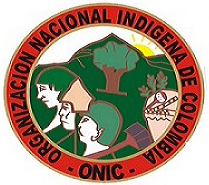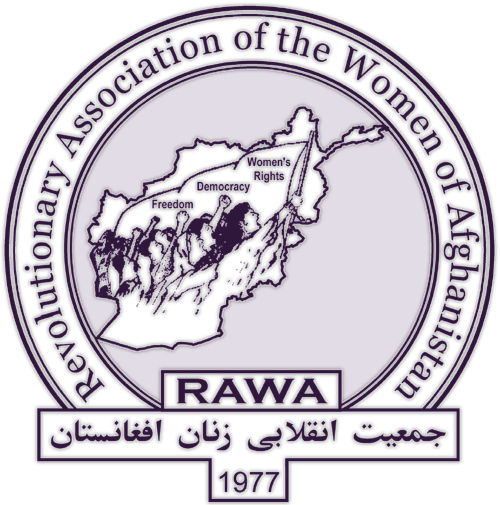mining
Glencore secures Libya oil contract
Media accounts Nov. 20 report that Glencore, the commodity trader with global mining operations, has secured a deal with Libya’s National Oil Corporation (NOC) to broker the nation's crude. The agreement, initiated in September with an option to renew in December, covers 150,000 barrels a day, or roughly half the amount currently being exported. According to Reuters: "Under the arrangement...Glencore loads and finds buyers for all the Sarir and Messla crude oil exported from the Marsa el-Hariga port near the country's eastern border with Egypt." The reports portray the deal as uncontroversial. The Financial Times writes: "The National Oil Corporation, along with the central bank, is one of the few institutions still functioning in Libya, where a civil war has left the country divided between an internationally recognised government in the east and an Islamist militia in the west that controls the capital Tripoli." In fact, the NOC is also divided, with feuding branches controlled by the rival regimes. Marsa el-Hariga is just outside Tobruk, exiled seat of the recognized government. We can be certain that the Glencore deal will raise protests (at least) from Tripoli.
Mining company to pay in Brazil disaster
Brazilian mining company Samarco has agreed to pay at least $260 million in compensation for the Nov. 11 collapse of two dams it used to hold waste water from iron ore, which caused an avalanche of mud to inundate nearby villages in Minas Gerais state. Eleven people were killed and 12 are missing, presumed dead. The village of Bento Rodrigues was totally destroyed, with more than 500 people left homeless. Residents are being temporarily housed in hotels in the city of Mariana. Some 250,000 local residents are also left without drinking water. The mud is still being tested for potential toxins from the mine. In imposing the fine, Brazilian environmental agency IBAMA called the disaster "the worst mining accident in Brazil's history." Operations at the facility remain suspended, with Samarca admitting that two more dams at the site are "at risk of collapsing."
Argentina: anti-mining struggle scores victory
Residents in the northern Argentine town of Famatina celebrated a major victory Nov. 4 after the governor-elect (and current vice-governor) of La Rioja province, Sergio Casas, announced that the Midais mining company's planned gold project in the area would be cancelled. This decision comes weeks after a peaceful protest against the project was met with police repression. Residents fear the project would contaminate the waters of the local Río Blanco. This is the fourth time that Famatina residents have thwarted mining efforts in the province of La Rioja, having successfully defeated advances by major international companies Barrick Gold, Osisko, and Shandong Gold over the past 10 years. Vice-Governor Casas cautiously commented: "The company will go despite its activities not having caused contamination, but we look for a necessary consensus among residents." (Argentina Independent, Nov. 4)
Anarchist bomb blasts in Mexico City?
A group called the "Pagan Sect of the Mountain" (Secta Pagana de la Montaña) claimed responsibility for Oct. 31 coordinated attacks with improvised explosives that damaged four buses of the MexiBús commuter line at a terminal in the Mexico City suburb of Ecatepec. There were no casualties. The communique, online at ContraInfo, was full of eco-anarchist rhetoric, pledging more bombings to resist the "frenetic advance of modern development... If civilization destroys nature, we will respond in the same form." It signed off: "Fire and explosives against civilization!" The Prosecutor General of the Republic has opened an investigation. (La Jornada, La Jornada, Nov. 2)
Amnesty presses Colombia on indigenous rights
The Colombian government must prioritize the right of Indigenous and Afro-descendant communities to decide how their land is developed above companies' desire to exploit those territories for profit, said Amnesty International in a new report issued Nov. 5, entitled "Restoring the Land, Securing Peace: Indigenous and Afro-descendant Terrirotial Rights." Control of Colombia's resource-rich land is one of the most critical issues in the peace negotiations between the government and the FARC guerillas, according to the report. Said Erika Guevara Rosas, Americas director at Amnesty: "The ownership and occupation of land has been at the heart of Colombia's brutal war, with around six million forced off their homes since 1985 because of the violence. Any peace deal will be meaningless unless the rights of Indigenous and Afro-descendant communities to return to their lands and decide how they are used are prioritized above companies' desire to exploit those lands for their own profit."
Argentina: more repression of anti-mine protests
Residents of San Juan Jáchal, in Argentina's northwestern province of San Juan, are mobilizing in the wake of last month's cyanide spill at Barrick Gold's Veladero mine, under the slogan of "A Spring without Barrick or Cyanide." In the first protest roadblock the province has seen, demonstrators on Oct. 22 took over an access road leading to the mine, with a banner reading "HELP! BARRICK KILLED THE HOPES OF THE FARMERS!" The blockade was broken up that night by federal police troops at 4 AM, with 23 arrested. The local committee "Jáchal No Se Toca" (Hands Off Jáchal) issued a statement decrying the "violence and brutality" of the army attack. The Sept. 13 spill of a million and a half liters of cyanide-contaminated water affected the local Río Jáchal. (InfoBae, Oct. 23; Radio Lavaca, Buenos Aires, Oct. 22)
Argentina: police repression of anti-mine protest
A peaceful anti-mining march headed towards the Midais site in Argentina's La Rioja province was dispersed by police using tear-gas and rubber bullets Oct. 15. The march was made up of environmental activists and citizens from Famatina, near where Argentine firm Midais SH hopes to begin gold-mining operations. Provincial police attacked the march, which began in the town of Angulos, to enforce a judicial order barring protests within three kilometers of the mine site. National deputy Julio César Martínez of the Radical Civic Union (UCR) was reportedly hit in the neck with a rubber bullet during the assault. Two children were also reported injured. Fatamina was the scene of widespread protests in 2007 and 2012 when Canadian companies Barrick Gold and Osisko sought to begin operations. Residents fear for the impacts of mining on the local Río Blanco, and say the companies have no "social license" to operate in the area. (Argentina Independent, IPPM, InfoBae, Clariín, Oct. 15)
Philippines: mining link seen to paramilitary terror
In the latest of a wave of deadly attacks on indigenous peoples in the southern Philippines island of Mindanao, a community leader was gunned down by armed men on a motorcycle in Agusan del Sur province on Sept. 28. Lito Abion, 44, a leader of the indigenous organization Tagdumahan, was slain in Doña Flavia village, San Luis municipality, where he long been an advocate for land rights and local autonomy—especially opposing large-scale gold-mining operations in the area. This year has seen several killings and violent attacks on Lumads, as the indigenous peoples of the region are collectively known. Following a call from the Catholic Bishops' Conference of the Philippines, the central government has formed a commission to investigate the attacks, led by Edmundo Arugay, director of the National Bureau of Investigation. But local rights advocates see the government's hand in the violence, pointing to a paramilitary group called the Magahat Bagani Force, said to be linked to the Philippine army. Some 3,000 Lumad residents of the municipalities of Lianga, Marihatag, San Agustin, San Miguel and Tago have been displaced by fighting in their villages and are currently taking shelter at a sports complex in Tandag City, Surigao del Sur province. The abuses have escalated along with a new counter-insurgency offensive against guerillas of the New People's Army (NPA) in recent weeks. (Rappler.com, Oct. 1; PIPLinks, Sept. 30 Inquirer, Sept. 6)















Recent Updates
13 hours 6 min ago
17 hours 55 min ago
1 day 9 hours ago
1 day 9 hours ago
1 day 16 hours ago
1 day 18 hours ago
2 days 9 hours ago
2 days 17 hours ago
4 days 11 hours ago
4 days 11 hours ago